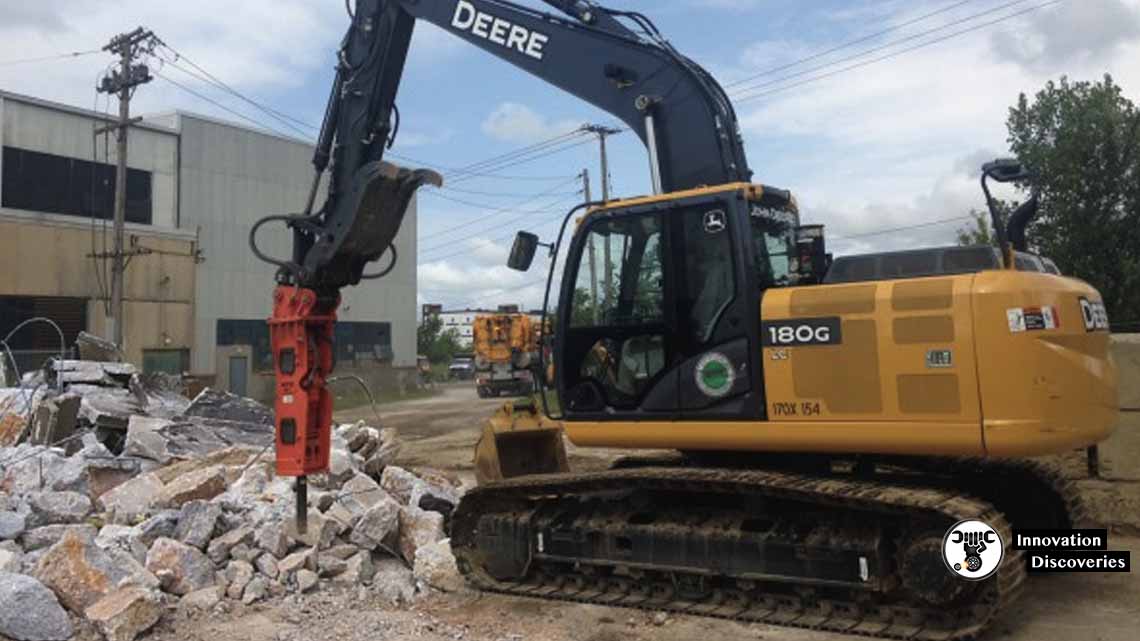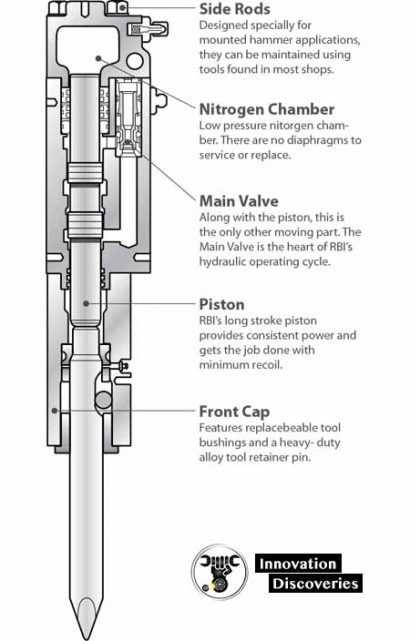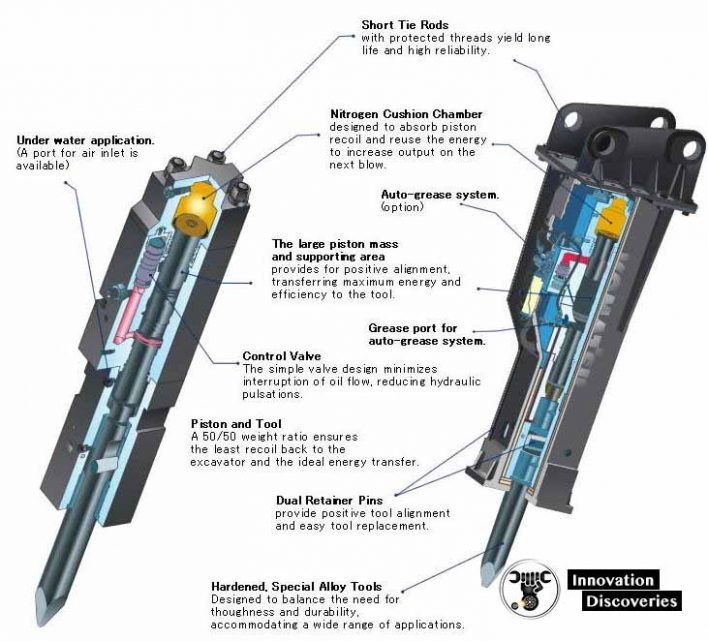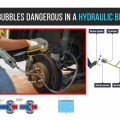The Hydraulic hammer is a construction equipment that is used for the
Demolition of a structure and breaking rocks into smaller sizes. It is an attachment to an excavator and works on the principle of hydraulics. It applies high pressure from its small canister which has pressurized hydraulic oil stored in it. They are much more powerful than other hand-held hammers and its force is varied based on the
Force of piston strokes and its size.

The hydraulic hammer is of two types namely – inner valve type and outer valve type. Both types have mostly the same components,
Such as a cylinder which is the most important part of the hydraulic system. A piston is also present in both types of a hydraulic hammer which converts kinetic energy into
Hammering energy and a front head is featured to support the machine,
And one back head which contains the nitrogen gas.

Most applications for hydraulic hammers are for mining,
Rock breaking, concrete breaking, and demolition. Many are designed as attachments to
Mobile equipment such as backhoes and diggers.
Working of a Hydraulic Hammer
Hydraulic hammer works on the principle of hydraulics by Blaise Pascal which states that
”Applying pressure on one part of a fluid transfers that pressure to all areas of the fluid,
Allowing for a multiplication of force”. Since the oil used is incompressible,
It allows the transfer of power instantly with negligible loss.
The hydraulic hammer starts with its main valve in the cylinder. The hydraulic oil is supplied to hammer through this valve. When upward stroke takes place,
The pressure in the upper chamber is released by the main valve and through the outlet. Then the high pressure in the lower chamber pushes the piston upwards.

As the piston reaches the upper end of the stroke,
The main valve directs the flow to upper chambers that make it a high-pressure chamber. This causes the piston to move downward because of accumulated energy from the gas chamber,
Hence, creating the impact stroke cycle. The energy is transferred to the tool that uses it to do various tasks.
At the point of impact,
The main valve shifts and the pressure from the upper chamber is released,
Enabling the upper stroke to take place.
Most of the hydraulic hammers come with fully enclosed
Housing over their parts not only to protect them from other materials;
But to ensure that they last longer.
Moreover, the shock absorber also helps to protect the parts of the hydraulic hammer.
Hydraulic hammers are environment-friendly because they produce less noise and pollutants. They are preferred in the places that are sensitive to vibration and noise,
As a vibratory hammer may damage the existing structures.«



4 Comments